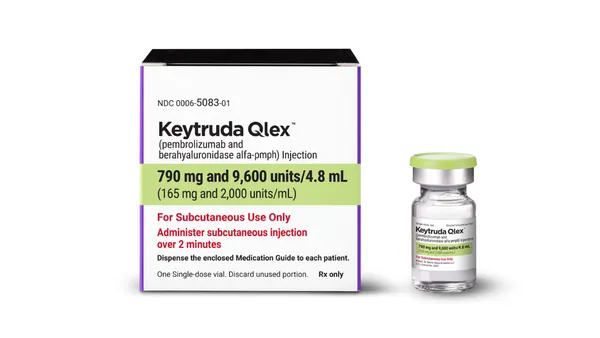Creating Effective Advertising: Four Steps to Expressing a Brand’s Full Potential Ian McKinnon, Ph.D., Senior VP, Advanced Methods TNS Healthcare Campaign Development Physicians often first know a brand through its advertising — whether from detail aids or journal ads. Physicians’ brand perceptions are shaped by a combination of the brand’s advertising, its competitors’ advertising, and their own experiences. Advertising lays the groundwork for physicians’ perceptions by expressing the brand’s features and benefits. Effective advertising must explain and defend a drug’s value, articulate the patients for whom it’s appropriate, and differentiate it from competing brands. When launching a new drug, there are four fundamental steps to creating a successful ad campaign for physicians. Remember, however, there are analogous steps for creating patient advertising. Step 1 Identifying Advantages and Disadvantages The first step in creating an effective ad campaign is identifying the advantages and disadvantages of both the brand and its competitors. Studies to achieve this — called fundamental positioning studies — involve rating the brand and others in the market against critical attributes within the therapeutic category. The best positioning studies focus on revealing the brand’s future performance and look at strengths and weaknesses to uncover how to optimize success. Before starting to develop advertising, there must be a clear understanding of what physicians view as the advantages and disadvantages of the drug vs. its competitors, as well as a deep knowledge of the dynamics within that therapeutic category. The combination of this information discovered in the foundational positioning study must then be distilled into the brand’s positioning or platform positioning. This is the cornerstone of the drug’s persona that its advertising will convey to physicians. Step 2 Building Messages After the foundational positioning research is complete, a set of messages must be developed that clearly communicate the drug’s positioning. Qualitative research should be implemented first to construct a set of options that can later be tested quantitatively. In the initial stage of message development, qualitative research is vital to exploring the meaning of the drug’s strengths and weaknesses and to translating that meaning into message elements. The process of message identification does not end here. Messages now must be tested quantitatively, which should allow for many messages to be tested in their natural state. Messages should appear in bundles, just as sales representatives would deliver them. Quantitative testing identifies the effect of messages on the key factors that drive brand success, such as impact on preference share, credibility, differentiation from other brands, and alignment with the product’s own positioning. It provides a tool that simulates the impact of different message bundles, allowing for “dynamic” decision-making. After the quantitative phase, a final round of qualitative research often is needed to identify the optimal story flow. This phase allows doctors to assemble messages in the most meaningful order. It reveals many of the “whys,” leading to the final polishing and clarification of messages. Step 3 Developing Creative Concepts The third step is identifying the creative concept that is best for the brand. The creative concept is the visual that represents the brand. To have full impact, it must become synonymous with the brand itself. Like Nike’s swoosh or Apple’s apple, the creative concept represents the brand. It both supports the brand and reminds viewers of their brand perceptions. Creative concepts, often with headlines and taglines, are tested qualitatively first to understand what doctors believe they signify and what emotions they provoke. The winning elements then undergo quantitative testing to determine the creative that best represents and differentiates the brand. Many of the standard metrics used in primary research fall short when testing creative concepts. To assess the best creative concepts, metrics, such as stopping power, memorability, and emotional projection, must be employed. Step 4 Pulling It Together The last step pulls all the pieces together, through both qualitative and quantitative research, to create the best detail aid. Since the detail aid is the most critical facet to communicating with physicians, it is essential that each support point is articulated clearly, that the flow is optimized, and that the concept is compelling. At this stage, the most impactful messages, their flow, and the creative concepts are combined, refined, and finalized to ensure the sales aid is clear, compelling, and differentiating, so uptake will be maximized. Conclusion Advertising is a brand’s face to physicians. To create the right face — one that optimizes performance — it’s essential to follow these four steps. Four Steps to Creating Effective Advertising There are four steps to creating effective advertising: determining positioning and testing messaging, creative concepts, and the detail aid. Message Development and Testing Creative Concept Testing Sales Aid Development/Testing Qualitative Message Dev’t Quantitative Message Dev’t Qualitative Message Flow Dev’t Qualitative Concept Dev’t Quantitative Concept Dev’t Qual Sales Aid Assessment/ Quantitative Testing Final Sales aid Assessment TNS Healthcare, New York, which is part of TNS, provides globally consistent solutions and custom advisory services to support product introductions, brand, treatment, and sales-performance optimization, as well as professional and DTC promotional tracking. For more information, visit tns-global.com. March 2007 VIEW on Advertising
An article from


Creating Effective Advertising: Four Steps to Expressing a Brand's Full Potential
Filed Under:
Commercialization










